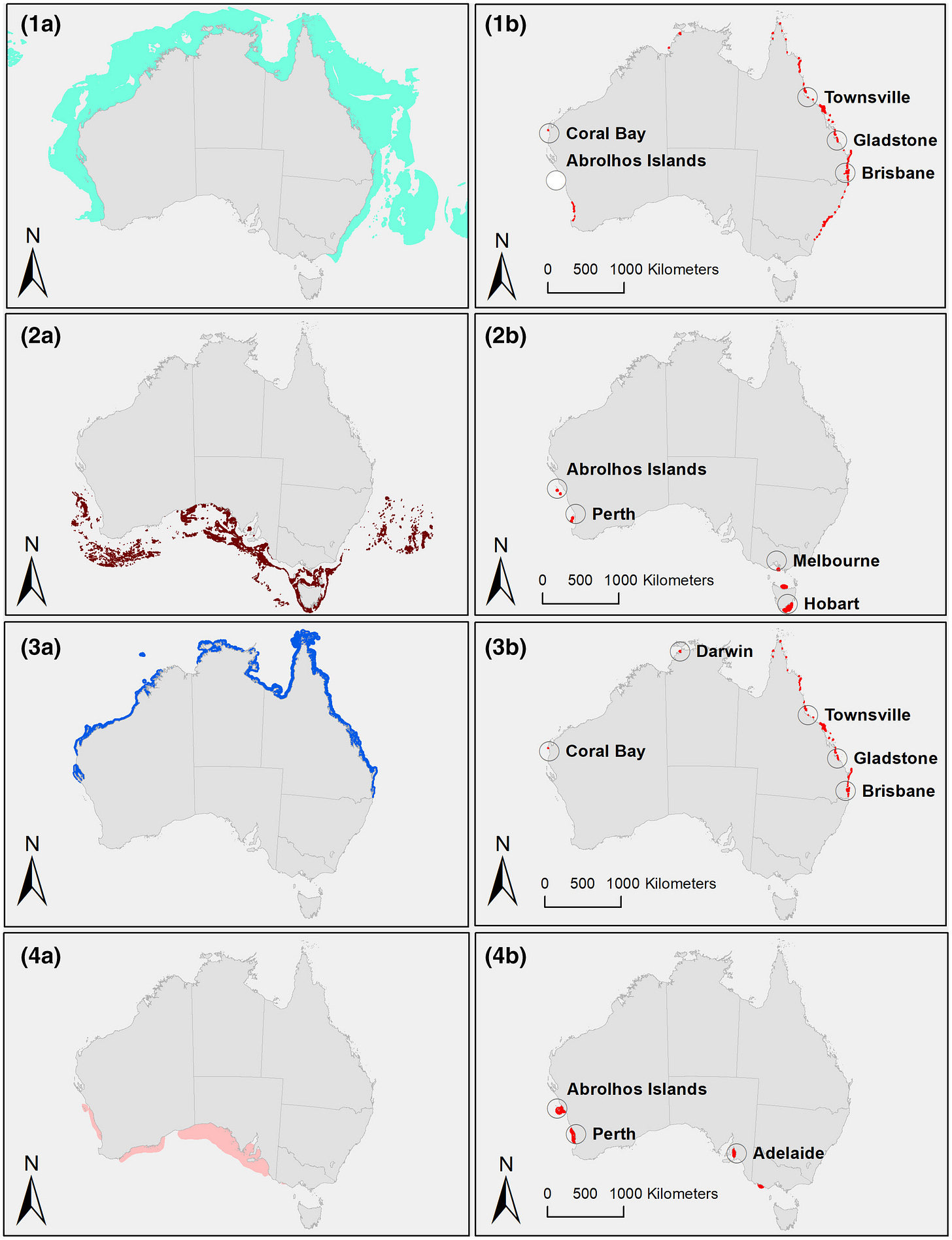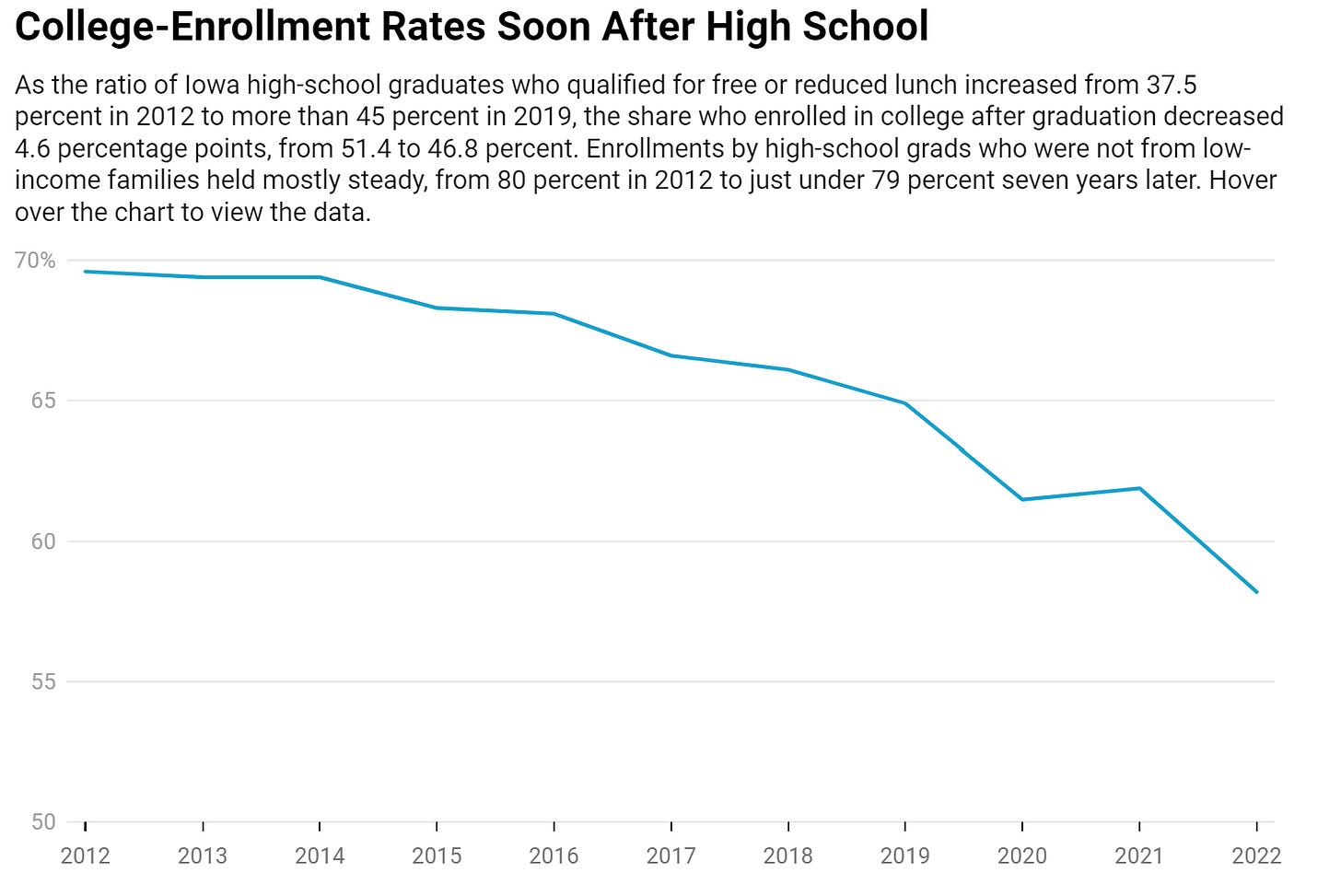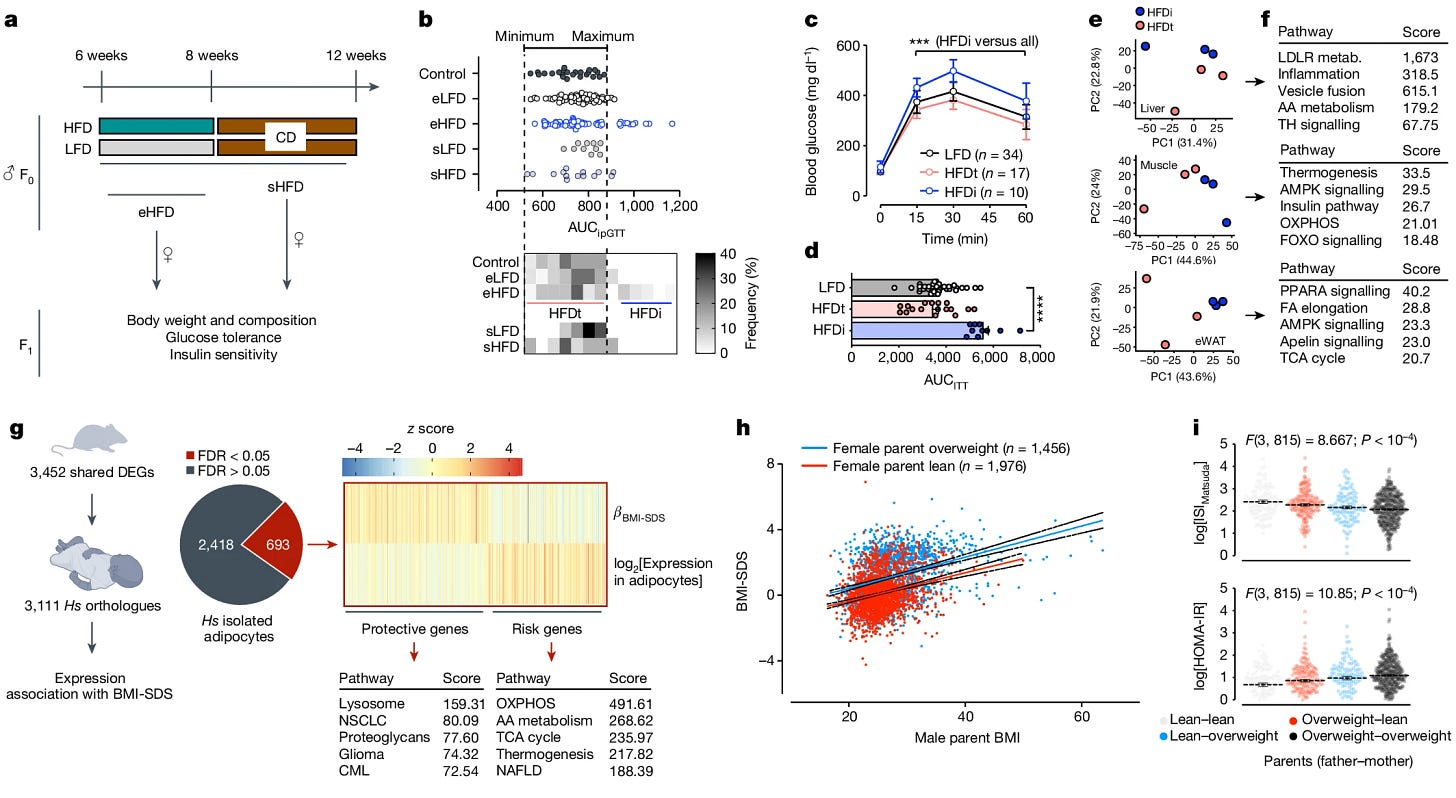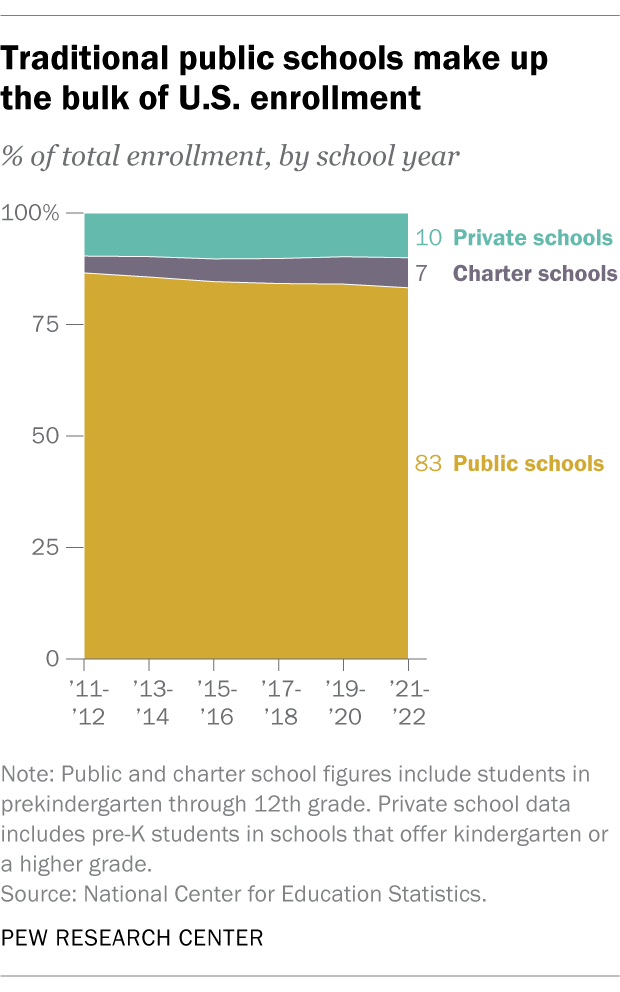I’ve been at a conference this week so there was no Tuesday post and no pictures from the gardens this week. Still, plenty of interesting stuff today.
Graph of the week
This comes from Predictive modelling reveals Australian continental risk hotspots for marine debris interactions with key threatened species. (6/5/2024)
Here is the captions so you can read this:
Distribution maps of key threatened species (left) and areas of risk of species' interaction with debris particles (right) for (1) green turtles (2.2% of their distribution), (2) Flesh-footed Shearwaters (0.9% of their distribution), (3) dugongs (5.2% of their distribution), and (4) Australian sea lions (0.8% of their distribution). Circled areas indicate large cities and townships.
And here is something interesting from the paper:
Mangroves have historically been found to overlap with areas of high debris density (Luo et al., 2021). Numerous studies have shown that mangroves are a sink for both land and water borne debris due to their structural complexity (Ivar do Sul et al., 2014; Luo et al., 2022; Martin et al., 2019). This is consistent with our results showing that distance from mangroves (km) was a significant predictor of increased debris. Coastal mangroves provide several unique services to both people and nature such as acting as carbon sinks, buffering coastlines against storms, and providing nursery habitats for juvenile fish species (Romañach et al., 2018). This highlights the need for clean ups and increased protection to be prioritized around mangrove systems.
Add to the concerns for higher education
This comes from the Chronicle of Higher Education, and the title basically says it all: The Lure of Work: In Iowa, enrollments are falling as businesses recruit high-school grads. Can colleges come up with a better pitch? (6/3/2024) There is a lot that can be said about this article; I’ll limit myself to three points.
“We’re trying to even get into elementary schools to tell kids, manufacturing’s a really good career,” Stanley said. “You don’t have to go to college, you can make really good money, you learn on the job,” and factories aren’t as dirty and messy as some might think.
Ashley Stanley is the senior human resources manager at Bertch Cabinet and it is interesting to see the efforts she is going through to recruit workers and to generally promote manufacturing as a career choice. I don’t think colleges have faced this type of competition in the past. Manufactures and trades are having a harder time finding workers, and along with increased wages (Bretch Cabinet has increased the starting pay to three times the state’s minimum wage of $7.25 per hour), they also need to change the narrative that college is the only path to a good-paying job. Relatedly, I think it is a good thing if we lose the narrative that somehow you are lesser for not going to college, which is a narrative supported by higher education because it is good for revenue.
A shift happening in the Midwest is especially visible in Iowa: Residents’ embrace of higher education as the key to a stable economic future is loosening, according to college officials, school counselors, business owners, and students and families themselves. While a recent Chronicle survey found that a majority in the Midwest and nationally still would advise a family member or friend to get a bachelor’s degree, other data show that high-school graduates are increasingly making a different choice for themselves.
I’ve said this before: higher education selling itself as a return on investment (the path to a good job) is a losing narrative. The fact is that it isn’t a financial return for all students, and, in fact, the more colleges attract students that aren’t suited for college (this isn’t just about cognitive skills but also temperament, intertest, etc.), the more they graduate, or worse, fail to graduate students that aren’t financially better off for going to college. This is a path to lower enrollment.
The caption here gets at something that wealthy or “educated elites” don’t seem to get. Investing in your future is really hard to do if you can’t feed yourself today. Lower-income families are just trying to get by and can’t be worried about, maybe, being better off after 4 years of college. What I hear too often are comments about “these people” being stupid or shortsighted. No, they are just trying to get by today. The data here about increasing free school lunch and decreased college attendance shouldn’t be a surprise. I’ll talk a bit more about this, what I’ll call “understanding gap,” next Tuesday when I talk about the book Second Class: How the Elites Betrayed America's Working Men and Women by Batya Ungar-Sargon.
Summer electricity reliability assessment
From the eia (6/10/2024).
Two comments are about this. It is a little disconcerting that, living in the USA, all regions aren’t gray. Apparently, we have some work to do on our electrical system.
Parts of the United States could be at risk for electricity supply shortages if electricity demand peaks are higher than anticipated or if less electricity is generated than expected, according to the North American Electric Reliability Corporation’s (NERC) 2024 Summer Reliability Assessment. Under normal summer demand conditions, NERC expects the continental United States to have adequate power resources this year.
What are the chances that everything is normal in all yellow regions all summer? It seems that what the report says is that an unexpected heat wave could, or is it would, cause problems. Also, what constitutes unexpected? It seems I need to read the NERC report.
Dad’s health matters
From the abstract of the paper Epigenetic inheritance of diet-induced and sperm-borne mitochondrial RNAs (6/5/2024):
We show that epididymal spermatozoa, but not developing germ cells, are sensitive to the environment and identify mitochondrial tRNAs (mt-tRNAs) and their fragments (mt-tsRNAs) as sperm-borne factors. In humans, mt-tsRNAs in spermatozoa correlate with body mass index, and paternal overweight at conception doubles offspring obesity risk and compromises metabolic health.
Some of the data is in this 8-for-1 chart.
Here is the caption (graph h, highlighted blow, is the key graph):
a, Experimental design. CD, chow diet. b, Glucose tolerance of unexposed male offspring (F1) of HFD-exposed bucks. Top: AUCipGTT. Bottom: frequency distribution analysis to identify tolerant and intolerant animals. n = 60 male mice across 4 cohorts with 5 litters each and 3 males per litter (eLFD and eHFD bucks); n = 10–15 (sLFD and sHFD bucks) including 1 cohort with 5 litters and 3 males per litter. c,d, Glucose tolerance (c; mean ± s.e.m.) and insulin sensitivity (d; mean ± s.e.m.) of male offspring (F1) of HFD-exposed bucks. Data represent a re-phenotyping of the animals in c carried out 8 weeks after the first phenotyping. Significance calculated by a two-way (c; n in graph) or one-way (d; n as in c) analysis of variance (ANOVA; ***P < 10−4). ITT, insulin tolerance test. e,f, PCA plot (e) and functional enrichment analysis (KEGG (Kyoto Encyclopedia of Genes and Genomes); f) of peripheral tissue RNA-seq data from HFDt and HFDi F1 animals. eWAT, epididymal white adipose tissue; metab., metabolism; AA, amino acid; TH, thyroid hormone; OXPHOS, oxidative phosphorylation; FA, fatty acid; TCA, tricarboxylic acid. g, Left: overlap between genes differentially expressed in tissues from HFDi mice and their human orthologues associated with childhood obesity. Right: functional enrichment analysis (KEGG) of the overlapping genes (n = 693) pre-classified as protective and risk genes for childhood obesity on the basis of the β-score for BMI-SDS. DEGs, differentially expressed genes; Hs, Homo sapiens; FDR, false discovery rate; NSCLC, non-small cell lung cancer; CML, chronic myeloid leukaemia; NAFLD, non-alcoholic fatty liver disease. h, Scatter plot of children’s body weight trajectories as a function of paternal BMI at conception in families with mothers who were lean (red line; r = 0.2611; P value < 10−4) or overweight (blue line; r = 0.3467; P value < 10−4) at conception. Significant association calculated by linear regression analysis. i, Insulin sensitivity, measured as ISIMatsuda (top) or homeostatic model assessment for insulin resistance (HOMA-IR; bottom) indices in children as a function of parental weight status at conception. n lean–lean = 106; overweight–lean = 184; lean–overweight = 114; overweight–overweight = 415. Data represented as mean ± s.e.m. Significance calculated by two-way ANOVA (details in the graph).
Charter schools
It is not hard to find an article, from the left, about how bad charter schools are in some way or another. Here is one of the five charts from Pew’s U.S. public, private and charter schools in 5 charts (6/6/2024).
In 10 years, charter school have only managed to enroll 7% of students, still less than private schools. They are a small player in the K-12 market. Quiz question? Which state has the most students in charter schools? DC at 36%, which is over double the next highest state (AZ at 19%) while still being tied with Hawaii for the most students in private schools at 19%. Only 45% of students in DC attend a public school. Interesting.
Data center update
Microsoft acquires another 123 acres of land in Johor, Malaysia (6/11/2024)
This is particularly interesting. South African gov’t says data centers should reduce reliance on the grid and start self-provisioning energy. Can't rely on the grid? Sort yourself out, says gov't. (6/11/2024)
“Currently, South Africa faces electricity supply challenges,” the report stated. “Given that data centers operate 24 hours a day and consume vast amounts of electricity, reliance solely on the national grid may be insufficient. Therefore, it is crucial for data center owners and operators to implement additional alternative energy resources to prevent operational disruptions.”
What we are seeing here is that the poorer countries don’t have sufficient or stable energy as it is, but to join the modern economy, they need data centers, which they don’t currently have the energy supply for. This really isn’t new, as plenty of industries need consistent energy and can’t locate to a place that doesn’t have it.
The spinning CD
Please share and like
Please help me find readers by forwarding this article to your friends (and even those who aren't your friends), sharing this post on social media, and clicking like. If you have any article ideas, feedback, or other views, please email me at briefedbydata@substack.com.
Thank you
In a crowded media market, it's hard to get people to read your work. I have a long way to go and I want to say thank you to everyone who has helped me find and attract subscribers.
Disagreeing and using comments
I'd rather know the truth and understand the world than always be right. I'm not writing to upset or antagonize anyone on purpose, though I guess that could happen. I welcome dissent and disagreement in the comments. We all should be forced to articulate our viewpoints and change our minds when we need to, but we should also know that we can respectfully disagree and move on. So, if you think something said is wrong or misrepresented, then please share your viewpoint in the comments.









